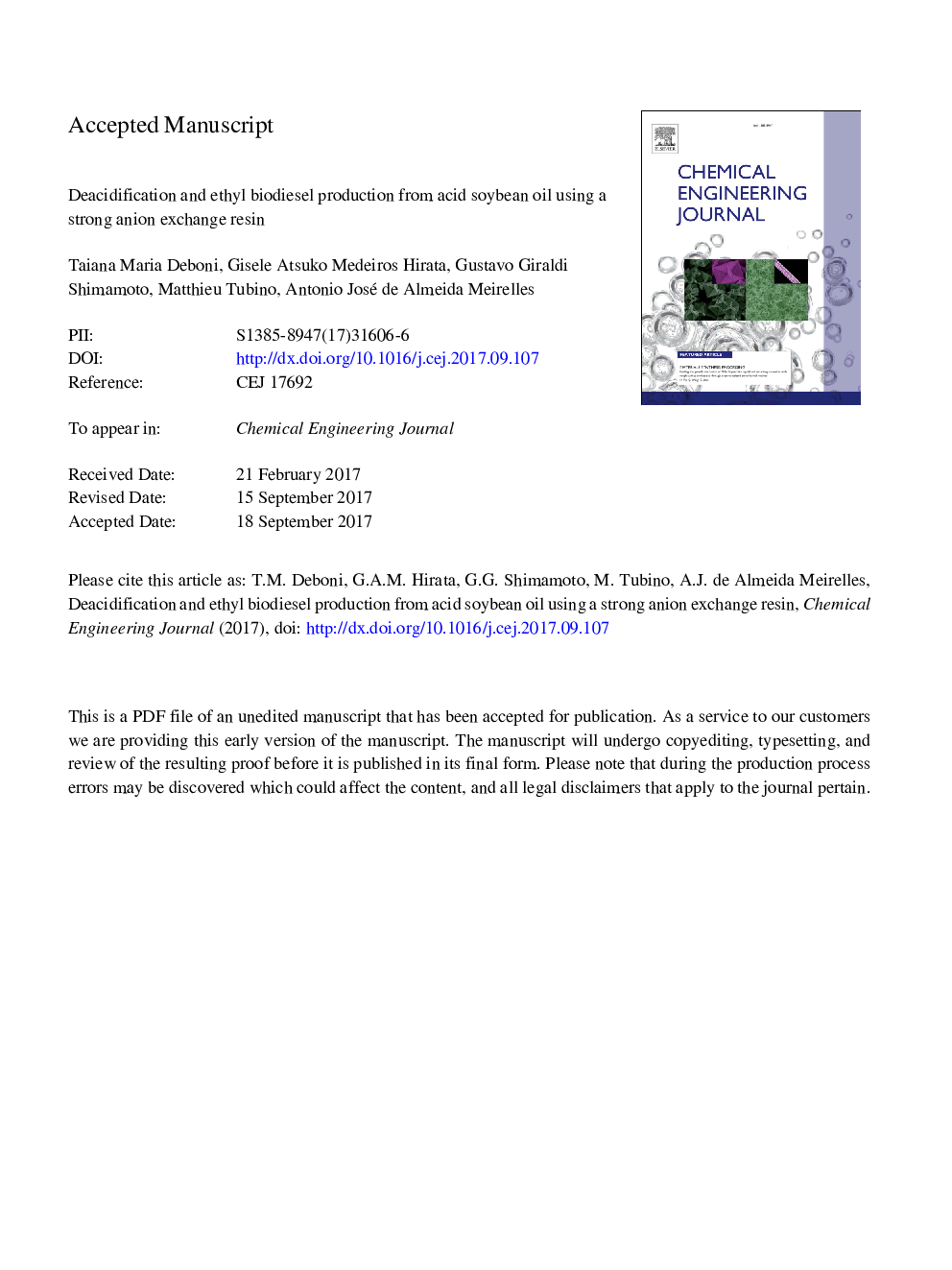| Article ID | Journal | Published Year | Pages | File Type |
|---|---|---|---|---|
| 4762758 | Chemical Engineering Journal | 2018 | 51 Pages |
Abstract
The objective of this work was to investigate simultaneously the deacidification and the ethyl biodiesel production from soybean oil using the Amberlyst A26 OH anion exchange resin. The behavior of the process was investigated as a function of resin loading, ethanol concentration and initial free fatty acids (FFAs) content. To obtain the acidified oil, degummed soybean oil and commercial linoleic acid were mixed. The Langmuir model was able to better describe the FFAs adsorption isotherms in comparison to the Freundlich equation. A high removal of FFAs with high deacidification rate could be obtained using lower initial ratios of FFAs per mass of dry resin, being this the more favorable condition for oil deacidification. Ester formation showed to be affected by the resin loading, initial FFA content and ethanol concentration in the medium. The adsorption of FFAs seemed to deactivate the catalytic activity of the resin sites. For this reason, a high resin loading was required, although it was still possible to obtain a satisfactory biodiesel production. The present work makes possible deeper understanding of oil processing by anion exchange resins in the presence of an alcoholic solvent.
Related Topics
Physical Sciences and Engineering
Chemical Engineering
Chemical Engineering (General)
Authors
Taiana Maria Deboni, Gisele Atsuko Medeiros Hirata, Gustavo Giraldi Shimamoto, Matthieu Tubino, Antonio José de Almeida Meirelles,
